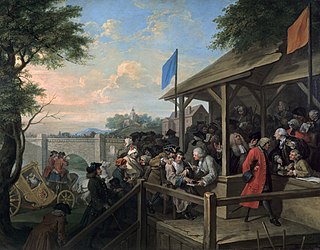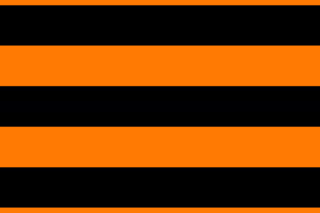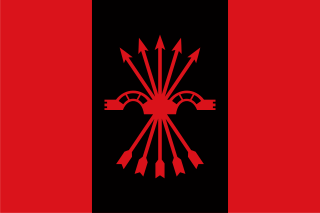 W
WPolitical symbolism is symbolism that is used to represent a political standpoint or party.
 W
WThe National Recovery Administration (NRA) was a prime agency established by U.S. president Franklin D. Roosevelt (FDR) in 1933. The goal of the administration was to eliminate "cut throat competition" by bringing industry, labor, and government together to create codes of "fair practices" and set prices. The NRA was created by the National Industrial Recovery Act (NIRA) and allowed industries to get together and write "codes of fair competition." The codes intended both to reduce "destructive competition" and help workers to set minimum wages and maximum weekly hours, as well as minimum prices at which products could be sold. The NRA also had a two-year renewal charter and was set to expire in June 1935 if not renewed.
 W
WThe bulava or buława is a ceremonial mace or baton.
 W
WThe Climate Clock is a graphic to demonstrate how quickly the planet is approaching 1.5℃ of global warming, given current emissions trends. It also shows the amount of CO2 already emitted, and the global warming to date.
 W
WPolitical colours are colours used to represent a political ideology, movement or party, either officially or unofficially. It is the intersection of colour symbolism and political symbolism.
 W
WThe extinction symbol represents the threat of holocene extinction on Earth; a circle represents the planet and a stylised hourglass is a warning that time is running out for many species. The symbol dates to at least 2011 and has been attributed to anonymous East London artist Goldfrog ESP. The symbol has been called "this generation's peace sign". It is used by environmental protesters, and has been incorporated in works by artists and designers such as Banksy. In 2019, the Victoria and Albert Museum acquired a digital copy of the symbol, and other artifacts featuring the symbol, for its permanent collection.
 W
WThe Flash and Circle is a political symbol used by several organisations. It was first used by the British Union of Fascists (BUF), and was adopted in 1935. The symbol represents action within unity.
 W
WSt Paul's Church is a Protestant church in Paulsplatz, Frankfurt am Main with important political symbolism in Germany. It is a parish of the Protestant Church in Hesse and Nassau, a United member church of the Evangelical Church in Germany. It is notable for being the seat of the 1848 Frankfurt Parliament, the first publicly and freely-elected German legislative body.
 W
WThe hammer and pick, rarely referred to as hammer and chisel, is a symbol of mining, often used in heraldry. It can indicate mining, mines, or miners, and is also borne as a charge in the coats of arms of mining towns.
 W
WThe Merkel-Raute is what has been termed Merkel diamond or Triangle of Power by English-speaking media: a hand gesture made by resting one's hands in front of the stomach so that the fingertips meet, with the thumbs and index fingers forming a rough quadrangular shape. This signature gesture of Angela Merkel, the current German Chancellor, has been described as "probably one of the most recognisable hand gestures in the world".
 W
WNail Men or Men of Nails were a form of propaganda and fundraising for members of the armed forces and their dependents in the Austro-Hungarian Empire and the German Empire in World War I. They consisted of wooden statues into which nails were driven, either iron (black), or coloured silver or gold, in exchange for donations of different amounts. Some took different forms, including pillars, shields or local coats of arms and crosses, especially the Iron Cross, and in German there are a variety of alternate names for them, including Wehrmann in Eisen or eiserner Wehrmann, Nagelfigur, Nagelbild or Nagelbrett, Wehrschild and Kriegswahrzeichen. The most famous were the original Wehrmann in Eisen in Vienna and the 'Iron Hindenburg', a 12-metre (39 ft) statue of Hindenburg adjacent to the Victory Column in Berlin.
 W
WThe ribbon of Saint George is a Russian military symbol consisting of a black and orange bicolour pattern, with three black and two orange stripes. It appears as a component of many high military decorations awarded by the Russian Empire, the Soviet Union and the current Russian Federation.
 W
WIn politics, a rosette is a coloured fabric decoration worn by political candidates to identify them in many countries. The rosette, worn on the chest or suit jacket, will show the colours of the political party that the candidate represents.
 W
WThe Six Arrows is the symbol and flag of the Turkish Republican People's Party (CHP). The arrows represent the fundamental pillars of Kemalism, Turkey's founding ideology. These are Republicanism, Populism, Nationalism, Laicism, Statism, and Reformism. The arrows are believed to have been conceived by İsmail Hakkı Tonguç, a Turkish scientist who made significant contributions to the Turkish education system. The principles of the Six Arrows were added to the Turkish Constitution on 5 February 1937. From August 1938 the flag was hoisted at all official buildings.
 W
WThe anti-nuclear badge “Nuclear Power? No Thanks", also known as the “Smiling Sun,” is the international symbol of the anti-nuclear movement. It was ubiquitous worldwide in the late 1970s and the 1980s. BBC News reported in 2005 that few symbols had become "as instantly recognizable across the world.". Even the nuclear power industry recognized the logo's "power and success," the BBC report said. Over 20 million Smiling Sun badges were produced in 45 national and regional languages. In recent years the logo is playing a prominent role once again to raise awareness and funding for anti-nuclear groups, especially in Germany, Austria and Switzerland where opposition is growing to plans for extending operation of old nuclear reactors and constructing new ones.
 W
WSymbolism in the French Revolution was a device to distinguish and celebrate the main features of the French Revolution and ensure public identification and support. In order to effectively illustrate the differences between the new Republic and the old regime, the leaders needed to implement a new set of symbols to be celebrated instead of the old religious and monarchical symbolism. To this end, symbols were borrowed from historic cultures and redefined, while those of the old regime were either destroyed or reattributed acceptable characteristics. New symbols and styles were put in place to separate the new, Republican country from the monarchy of the past. These new and revised symbols were used to instill in the public a new sense of tradition and reverence for the Enlightenment and the Republic.
 W
WThe symbols of Francoism were iconic references to identify the Francoist State in Spain between 1936 and 1975. They serve as visual illustrations for the ideology of Francoist Spain. Uniforms were designed for men and women that combined elements of the earlier Falangist and Carlist uniforms. The state developed new flags and escutcheons based on the traditional heraldry of the monarchy, but now associated with the state. The emblem of five arrows joined by a yoke was also adopted from earlier Spanish symbology, but after 1945 the arrows always pointed upward. This emblem appeared on buildings, plaques and uniforms.
 W
WThe yoke and arrows or the yoke and the bundle of arrows is a badge dating back to the Spanish co-monarchy of the Catholic monarchs Ferdinand II of Aragon and Isabella I of Castile. Subsequent Catholic monarchs continued to use it on their shields to represent a united Spain and as the "symbol of the heroic virtues of the race".